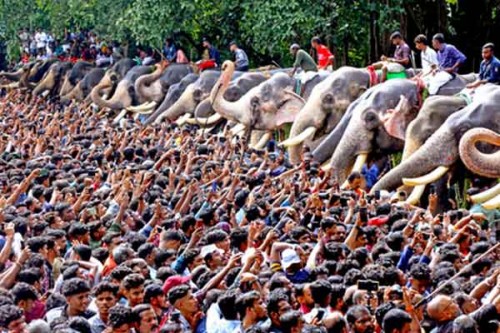Animal Rights organisations ask Kerala Govt to probe increasing deaths of captive elephants

Kochi, Jan 11 (IANS) The Federation of Indian Animal Protection Organisations (FIAPO) and Centre for Research on Animal Rights (CRAR) have demanded that the Kerala Government investigate the exceptionally high numbers of captive elephant deaths in the state.
This follows the death of a 60-year-old elephant Chandrasekharan, on December 29, 2023.
According to these animal rights groups, Chandrasekharan was one of the 450 privately-owned captive elephants, captured from the wild at a young age and traded to Kerala (illegally) from the North East.
He was paraded on an hourly rate from one Pooram (temple festival) to another through the gruelling six-month-long season.
This continued under his last owner, the president of the Travancore Devaswom Board. Even though he was in poor health, his custodians, mahouts, and agents, along with the Pooram committees were unrelenting.
By the time he reached the Chengannur Mahadeva Temple in Pathanamthitta, he was so exhausted that he collapsed and fell to the ground, unable to get up again.
It was only after the intervention of devotees, the general public, NGOs and activists that food and water, medication and veterinarians were provided.
“The whole modus operandi of making a majestic, wild elephant succumb to the stick of the mahout is to weaken his body and mind through cruel punishments and deprivation of food and water,” said Alok Hisarwala, lawyer and activist, and founder of CRAR.
Chandrasekharan was the 160th Pooram elephant to collapse and die like this since 2018.
This roughly translates to an annual death rate of 26 elephants and more than two elephant deaths every month. The majority of these cases involve the death of young elephants under the age of 50 who have died in the prime of their lives.
The State of Kerala’s records, supplied under the RTI Act, outlines the cause of death for several elephants as negligence, malnutrition, lack of care and diseases like impaction, septicemia, and foot rot, that are unusual in their wild counterparts.
Evidently, the leading cause of death among Kerala’s captive elephants is their ‘captivity’ itself.
Animal rights groups further point out, that a circular dated 22.01.2019 issued by the Kerala Forest Department highlights the alarming rate of captive elephant deaths in Kerala, attributing the increase to improper upkeep, poor management, and lack of timely treatment.
Moreover, the Supreme Court, in its order dated 18.08.2015 in the ‘Wildlife Rescue and Rehabilitation Centre vs Union of India’ case emphasised the duty of the State to ensure that no elephant is subjected to cruelty, with severe consequences for violators.
However, this has failed to change the ground reality. The tragic demise of captive elephants persists unabated due to sustained maltreatment.
“Kerala stands out in its egalitarian vision, the progress that it has made in the abolition of caste, untouchability and superstition, the State-sanctioned programs of gender and queer sensitisation and equality and its awareness and commitment to worker’s rights to a dignified life. That a progressive state like Kerala is indifferent to a tradition and industry that continues to produce suffering and violence at an enormous scale is nothing but a grotesque aberration,” said Bharati Ramachandran, CEO of FIAPO.
In the latest letter sent by CRAR and FIAPO, the groups have appealed to the State Government to urgently intervene and address the cruelty meted out to these Schedule I protected animals, declared as the National Heritage Animal of India.

|

|

